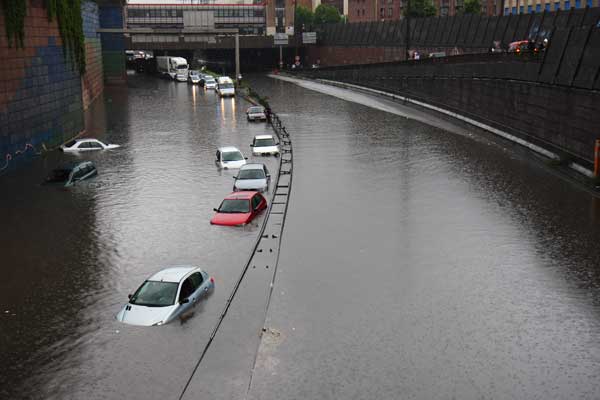Blog
Managing the Risk of Floods
In a rainy season, it's important to understand your flood risk. For insurance purposes, what is a flood? What proactive steps can be taken before a flood? How can you obtain the right insurance coverage?
In the face of winter—and all the wet weather that comes with it—FEMA's National Flood Insurance Program would like everyone to understand the risks of flooding.

Flooding has occurred across many parts of the country (yes, even California), including in areas we have never seen previously. It has brought unexpected damage and destruction to many communities.
Exposure to mudslides are now possible due to the many wildfires that have occurred throughout the year, so this is an important coverage to consider.
It's also important to note that flooding due to winter storms is not covered under a standard homeowners or renters policy. Coverage must be written separately through the National Flood Insurance Program or a private client personal insurance policy (depending on your flood zone). Without this extra protection, you have no coverage for water entering your home.
Unfortunately, people all too often underestimate their risk of flooding. Flooding is actually the most commonly occurring natural disaster in the world, far outpacing earthquakes and wildfires.
Let's look at this in closer detail.
What Is Considered a Flood?
A flood is defined by FEMA's National Flood Insurance Program as an excess of water on land that is normally dry.
More specifically, FEMA defines a flood as:
- Partial or complete inundation of two or more acres of (normally dry) land, or two or more properties, with water and/or mudflow
- The cause can be overflow of inland or tidal waters, the collapse of land along a body of water because of erosion, or waves/currents that exceed typical land boundary levels
It's important to understand the distinction between flood insurance and hurricane insurance. If a flood occurs and a hurricane hasn't been declared in the area, a hurricane policy will not cover the water loss. You may need both hurricane and flood coverage in hurricane-prone areas.
Read the related blog:
Water, Water Everywhere: How to Prevent the Avoidable Home Flood
The Key to Obtaining the Right Coverage (Hint: It Starts with Limits)
It's true that in high-risk areas, your mortgage company will require flood insurance. However, the National Flood Insurance coverage is limited to $250,000 for residential structures, which is well beneath the value of many homes (at least in California).
Consumers can purchase excess flood coverage above these limits; however, most consumers are not aware this extra protection is available.
If flood coverage is written at less than 80% of your home's replacement value (the cost to rebuild your home at today's costs, not the market value of your home), your coverage is settled on an "actual cash value" basis. This means all loss payouts for flooding of your home will be reduced based on the age and wear of your home.
For broader protection, request your agent to provide you with an excess flood estimate above the minimum limits, so you understand pricing for replacement cost coverage without depreciation.
Flood coverage for your personal property is a separate limit outside of your home coverage, and the maximum limit offered is $100,000. This would include furniture, window coverings, appliances, carpeting, clothing, etc. This area of coverage can also be increased with excess flood protection.
If eligible, a private client home program may also offer flood coverage at higher limits in both areas, depending on your flood zone. Note that the FEMA flood program does not offer coverage to live elsewhere while your home is being repaired due to a flood; a private client flood program offers this broader protection.
Isn’t Flood Insurance Expensive?
This is a common perception and one that often keeps people from pursuing proper flood insurance.
Policy rates vary and are based on several factors, including flood zone, amount of coverage desired, and building elevation. Pricing in preferred flood zones is actually quite nominal, considering the coverage offered.
If you are in a high-risk flood zone, consider getting an elevation certificate, which can dramatically reduce your pricing.
To obtain an elevation certificate, FEMA has a list of resources for engineers who can perform a review of your home to determine the elevation and what protection the home may have from flooding. These details require a little extra effort, but can work in your favor.
Understand the national flood rates and private client flood programs do not differ in pricing from agent to agent. Your rate will be the same regardless of your agent or broker.
Finally, don't wait for the unexpected to happen before you review your flood risk. Ask your broker to go over this information with you to determine your flood zone, pricing, and how much coverage you need to best protect your home and belongings. FEMA's program has a 30-day waiting period for most new policies written before coverage can take effect.
While those living in known high-flood zones may be more aware of their risks, flooding can happen anywhere. Our climate is not always predictable, and it pays to understand the history of your area, what kind of flood zone you're in, and your property's vulnerability before a storm occurs.
For more information about flood insurance and mitigating your risk, reach out to your Woodruff Sawyer Account Executive.
Table of Contents







